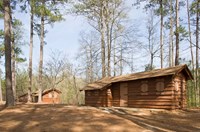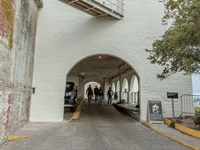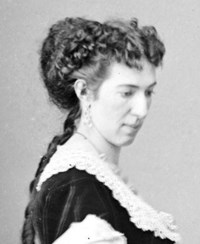- Catoctin Mountain Park (2)
- Prince William Forest Park (2)
- Alcatraz Island (1)
- Bering Land Bridge National Preserve (1)
- Cape Krusenstern National Monument (1)
- Gates Of The Arctic National Park & Preserve (1)
- Golden Gate National Recreation Area (1)
- Homestead National Historical Park (1)
- Kobuk Valley National Park (1)
- Show More ...
Showing 12 results for spirtuality ...
Austin Roberts
- Type: Person
This story about Austin Roberts begins when his name appears on a death certificate, but not his own. He was listed as the father of Harry Eddings(sp), a homesteader in Coffee County. Harry died in Caryville, Florida on April 29, 1921, after being in residence there for only 15 days. Based on his death certificate, his burial was in Coffee County, Alabama on April 30, 1921.
- Type: Place
Hard Labor Creek State Park is located in Rutledge, GA. The park is one of ten Civilian Conservation Corp (CCC)-built state parks in Georgia and contains the only extant CCC Camp, Camp SP-8, built for the workers. Two CCC camps were located at Hard Labor Creek, SP-8 and SP-11. Their projects included damming Hard Labor Creek and clearing land to create Lake Rutledge and Lake Brantley, building roads and bridges, reforesting land, constructing telephone lines, etc.
- Type: Article
The attacks of December 7, 1941 that began at Pearl Harbor were not the only targets of America's enemies. By the time World War II was over, Japanese forces had attacked the US mainland and almost all American territories in the Pacific. Some of these places of the Greater United States fell under enemy occupation. In the Atlantic, German U-boats targeted cargo ships. Germany, Japan, and Russia all had operatives and spies living and working across the country.
Glen Haven Dock
- Type: Place
The dock played a central role in the life of Glen Haven. Built around 1865, the dock stretched a hundred feet offshore and supplied docked steamships with cordwood, the original steamship fuel, cut from Northern Michigan forests. Around the turn of the 20th century, up to 70 vessels could be found anchored in Sleeping Bear Bay or at the docks during the shipping season. Original dock pilings can often be spied peeking out above Lake Michigan's waves.
Series: Prehistoric Life of Tule Springs
- Type: Article
Tule Springs Fossil Beds National Monument preserves thousands of Pleistocene (Ice Age) fossils that help tell the story of an ever-changing ecosystem. These fossils were preserved within expanding and contracting wetlands between 100,000-12,500 years ago. Many of the Pleistocene animals of Tule Springs are still alive today, including the coyote (Canis latrans), jackrabbit (Lepus sp.), and aquatic snails. Some animals went extinct, disappearing from North America entirely.
- Type: Place
During the 1860s, Alcatraz was the most fortified military site on the West Coast with over 100 cannons facing the bay in case of would-be intruders. The guardhouse was built in 1857, and contained the island's first prison, a US military stockade in the building's basement. That facility was used to house unruly soldiers and during the Civil War, Confederate spies. The guardhouse featured a sally port, an armored, controlled entryway to the fortress on Alcatraz beyond.
Alcohol and the Lewis and Clark Expedition
- Type: Article
From the National Archives, here is the receipt signed by Meriwether Lewis on June 1, 1803 for “30 Gallons Strong Sp. Wine @ 233 1/3 $70” and “6 Iron Bound Kegs 1.20 7.20” On his original list of goods needed for the Expedition, Lewis used the term “rectified spirits.” But what he actually purchased was labeled as “Strong Sp. Wine.” What exactly was this?
- Type: Article
In war it is the results that count, and the saboteurs and guerrilla leaders in Special Operations and the Operational Groups, the spies in Secret Intelligence, and the radio operators in Communications did produce some impressive results.
- Type: Article
Creating the training process was a big challenge. To prepare spies, saboteurs, guerrilla leaders, radio operators, psychological warfare specialists and commando teams for their clandestine missions, the Office of Strategic Services had to obtain instructors, prepare a curriculum, develop courses, and devise practical exercises.









